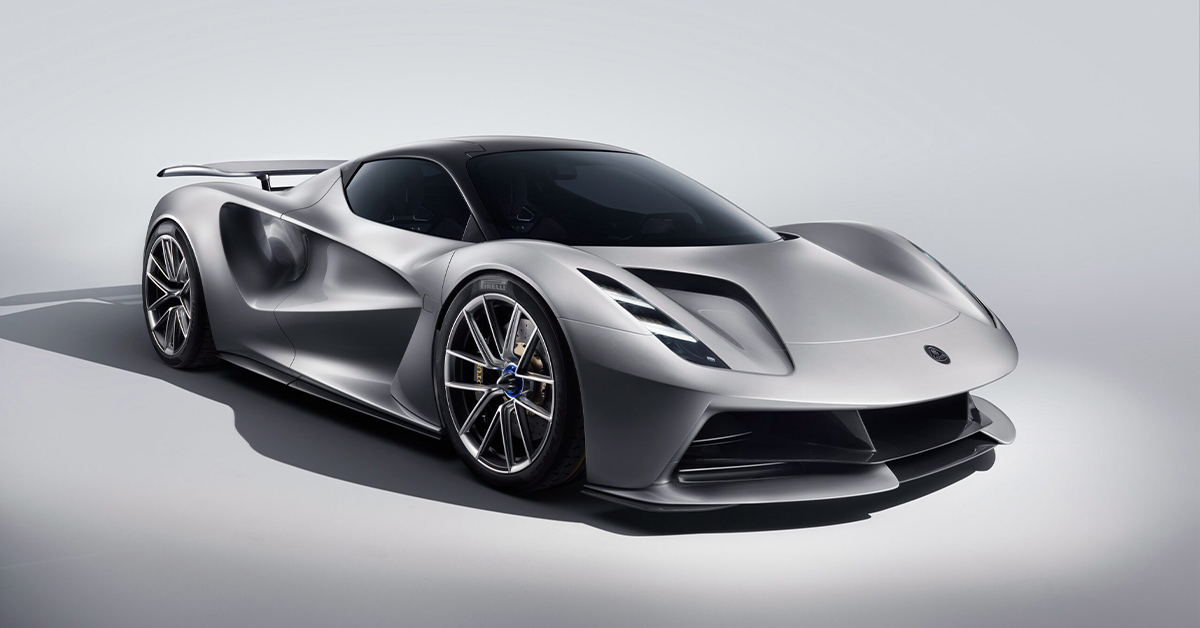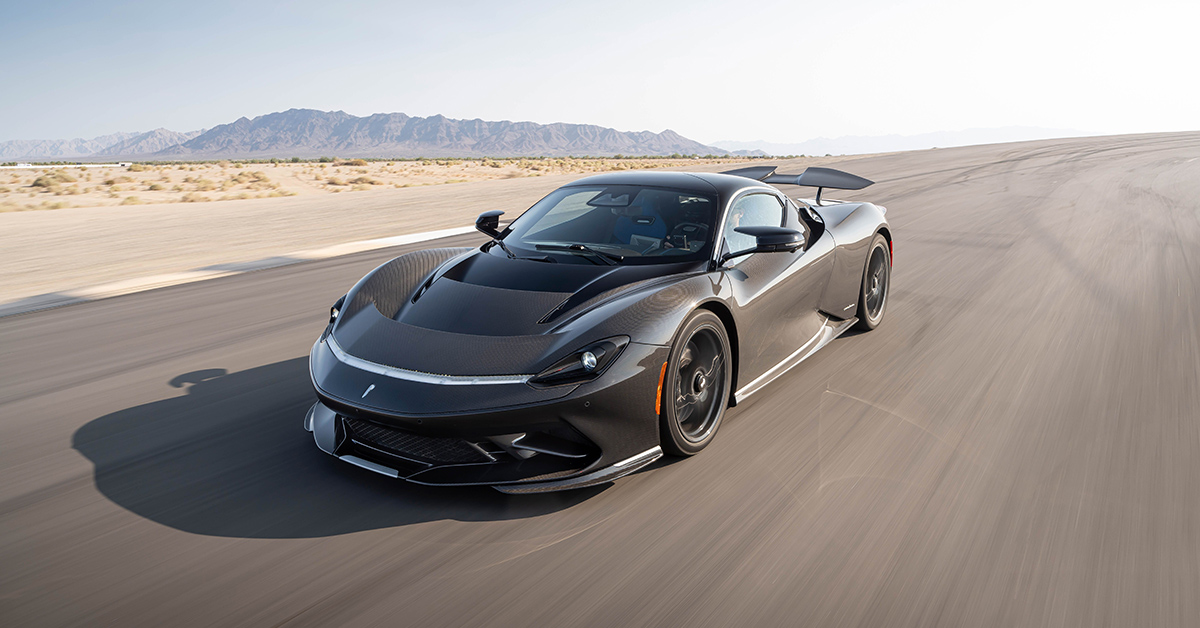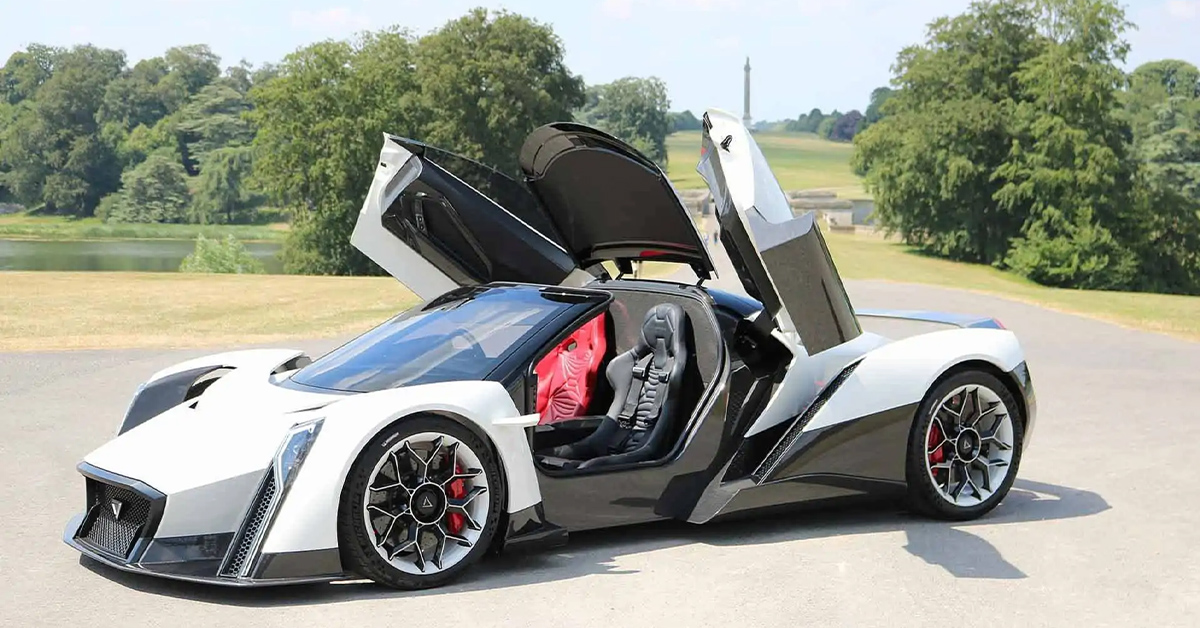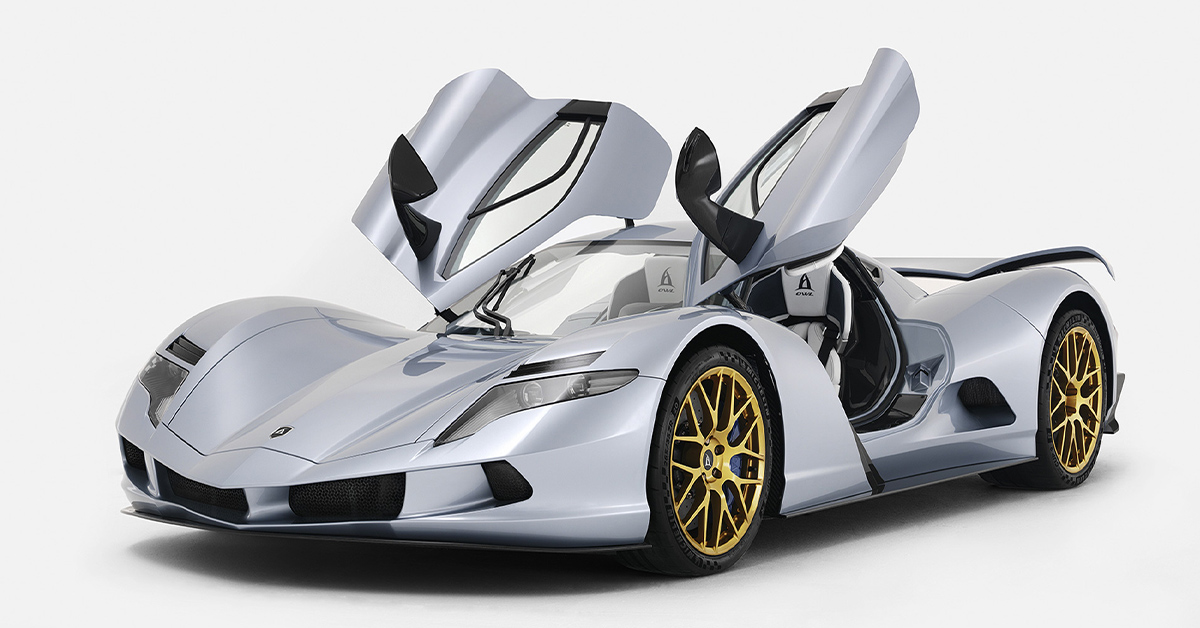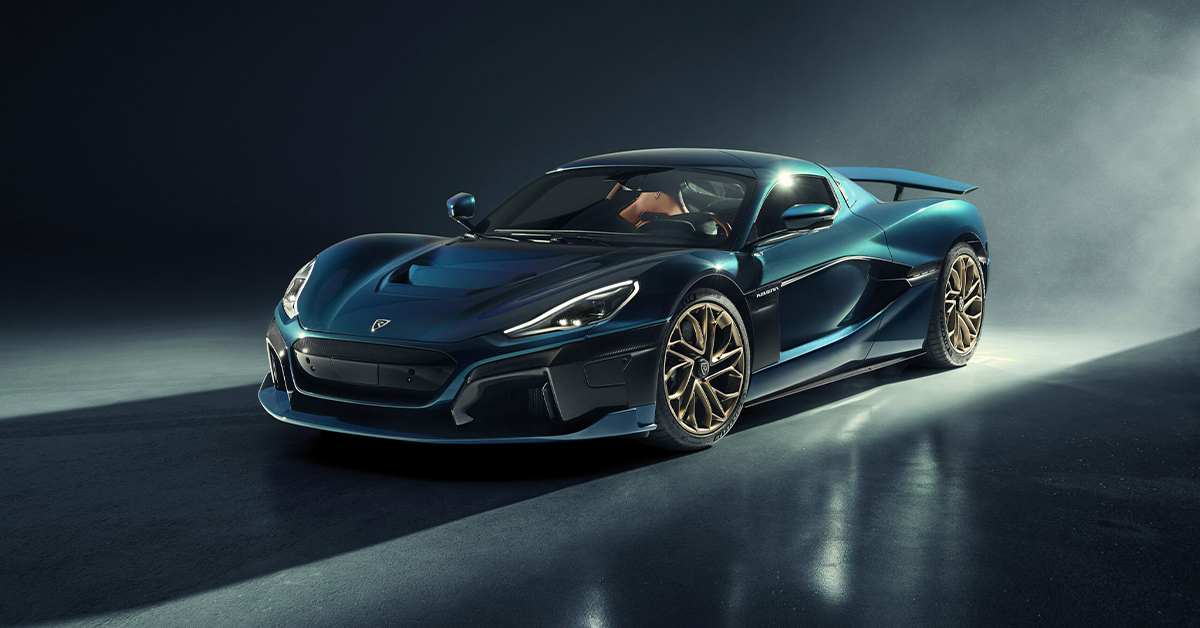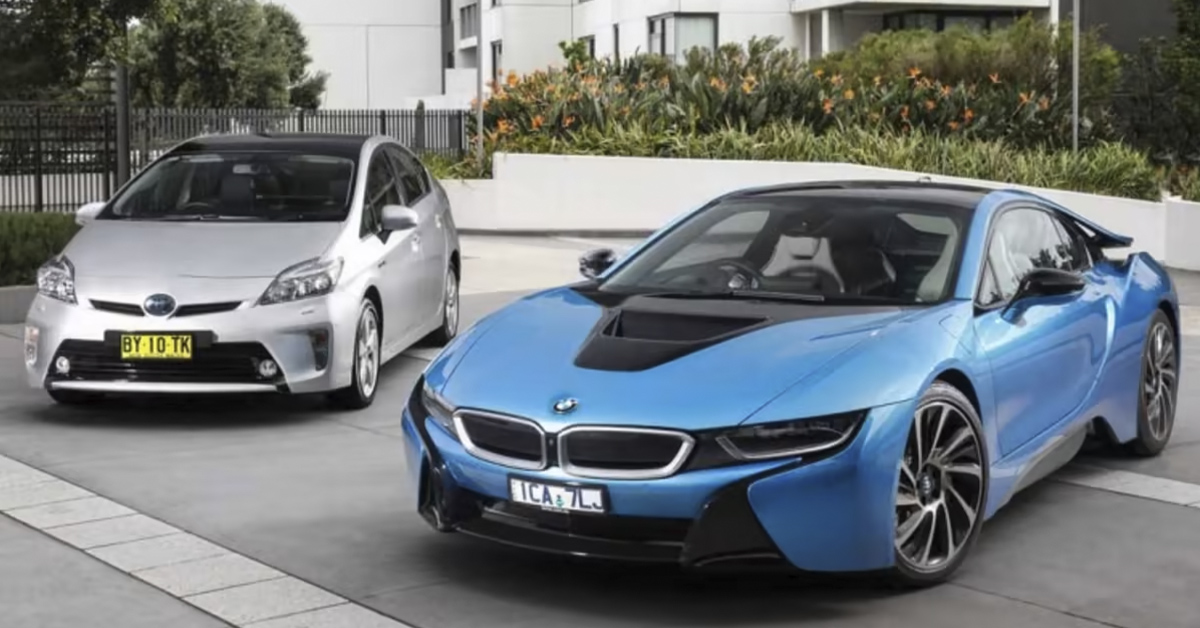
[ad_1]
The auto trade is evolving quickly, and the period of gas-guzzling engines is fading. Electrical energy now powers extra automobiles on the roads, and supercars are not any totally different. And there are a number of causes for this transition.
Electrical motors outperform gasoline engines in effectivity, delivering energy whereas consuming much less power. Consequently, electrical supercars boast wonderful throttle response and are enhancing vary yearly in comparison with their gasoline-powered counterparts. Moreover, by being emission-free, electrical supercars are significantly cleaner than combustion-engine ones.
Due to this fact, regardless of some followers of conventional fossil-fueled autos being hesitant about this shift, we can’t deny that the present market is flooded with thrilling electrical supercar fashions. These automobiles supply placing efficiency and embody the rules of sustainability.
Undoubtedly, the auto trade’s future, together with supercars, lies in electrical energy. And as battery expertise advances, electrical supercars will turn out to be quicker, extra environment friendly, and extra luxurious. Right now we carry you our choice of the 5 exhilarating electrical supercars you shouldn’t miss out on.
Lotus Evija
The Lotus Evija is a hypercar that mixes energy with a light-weight design. It represents the way forward for high-performance autos.
In 2019, Lotus launched the Evija as their first totally electrical manufacturing automobile, marking a powerful milestone. It’s the primary manufacturing automobile worldwide, producing a staggering 2,000 horsepower and 1,703 pound-feet of torque.
To maintain this powerhouse operating, the Evija depends on a 70 kWh battery that may cost as much as 80% capability in 18 minutes. This power powers 4 motors—one for every wheel—creating an all-wheel drive system that propels this car from 0 to 60 mph in a fast time of solely 2.8 seconds. Whereas its high velocity is electronically restricted to 200 mph, it provides a variety of roughly 250 miles (WLTP).
With its carbon fiber monocoque chassis and light-weight physique development, the Evija weighs in at 3700 kilos, contributing to its dealing with capabilities. The strategic placement of the battery pack behind the driving force additional enhances its efficiency.
Designed as a limited-edition masterpiece, Lotus plans to fabricate items of the Evija. It comes with a beginning price ticket of round $2,300,000—a testomony to its exclusivity and superior expertise.
Pininfarina Battista
By way of Automotive and Driver
They named it Battista as a tribute to the founding father of Pininfarina. It was formally unveiled on the 2019 Geneva Motor Present. With over 1,900 horsepower and a torque of two,340 Nm, it’s probably the most highly effective automobile ever inbuilt Italy.
The Battista’s unbelievable lightweightness is achieved via its carbon fiber monocoque chassis and 4 electrical motors, one for every wheel. This enables it to go from 0 to 100 km/h in 1.8 seconds, attain 300 km/h in 12 seconds, and obtain a 350 km/h velocity. It additionally boasts a variety of 482 kilometers because of its Rimac-manufactured battery with a capability of 120 kWh.
Constructed utilizing manganese, nickel, and lithium supplies with its T-shaped design, the Pininfarina Battista lowers its heart of gravity by positioning it on the car’s chassis. Moreover, its charging capabilities have been enhanced from the model launched in 2019, from 180 kW to 250 kW.
Amongst different notable options are 5 customizable driving modes tailor-made individually for drivers’ preferences, carbon ceramic brakes with massive discs measuring 390 mm, and superior six-piston monobloc calipers.
Pininfarina plans to provide solely 150 items of the Battista, priced at 2 million euros every, to keep up exclusivity and demand for his or her mannequin. A sought-after luxurious merchandise certainly.
Dendrobium D-1
The Dendrobium D 1, a hypercar launched in 2017, displays the imaginative and prescient of Mark Williamson, a former designer for prestigious automobile manufacturers like McLaren and Pagani.
Incorporating 4 motors—one for every wheel—the D 1 generates 1,800 horsepower and 1,475 lb-ft of torque. With this energy, it could go from 0 to 60 mph in 2.7 seconds with a 200-mph high velocity.
The D-1 includes a carbon fiber monocoque chassis and a light-weight physique to attain its efficiency. This meticulous design ends in a curb weight of 1,750 kilograms (3,858 kilos). Moreover, strategically putting the battery pack within the automobile’s core contributes to weight distribution.
What units the Dendrobium D-1 aside is its mixture of efficiency capabilities and light-weight development. It serves as a illustration of what future efficiency automobiles could embody.
Nevertheless, regardless of its prospects, whether or not Dendrobium D-1 will ever be manufactured stays unsure. The corporate has confronted challenges and has but to reveal vary, battery capability, or worth. Whereas the opportunity of seeing this car on the highway could also be unsure at instances, its existence provides an attractive glimpse into what lies forward for electrical hypercars.
Aspark Owl
By way of Supercars.internet
On account of its distinctive efficiency and light-weight development, the Owl electrical hypercar from the Japanese firm Aspark holds the title of the quickest electrical automobile on this planet.
Beneath its exterior, the Owl runs on a 64 kWh battery. It’s outfitted with 4 electrical motors, one for every wheel. This setup boasts an output of two,012 horsepower and a torque of 1,475 lb-ft. What’s actually mind-blowing is its blistering acceleration. The Owl rockets from 0 to 60 mph in 1.69 seconds and reaches a high velocity of 200 mph. Based on Aspark, the Owl provides a variety of 180 miles (WLTP) and might obtain an 80% cost in solely quarter-hour.
The Owl includes a carbon fiber monocoque chassis and light-weight physique to make sure efficiency and weight distribution. This mixture ends in a curb weight of 1,500 kilograms (3,307 kilos). It’s value noting that this extraordinary hypercar is a restricted version with plans to provide 50 items. The beginning worth for this car is $3.3 million.
Unsurprisingly, the Owl has already established two world data for the quickest electrical automobile speeds over eight miles (about 201 meters) and 1 / 4 mile (roughly 402 meters).
Rimac Nevera
In 2021, Rimac, a Croatian startup, launched the Nevera electrical hypercar because the successor to the Rimac Idea Two, which holds the world’s highest velocity report at 258 mph.
With its specs, similar to 1914 horsepower and a torque of 1740 pound-feet, each immediately obtainable, and distinctive four-wheel traction, the Nevera can speed up from a standstill to 60 mph in simply 1.85 seconds. And achieves 186 mph (300 km/h) in solely 9.3 seconds.
The Nevera’s carbon fiber monocoque chassis, together with its T-bar roof and rear subframe, are actually state-of-the-art. This automobile is heavier than most hypercars, at round 2150 kg. This features a battery weighing roughly 700 kg, cleverly organized in a T-shaped configuration behind the seats and occupying area throughout the spine and below the passengers’ legs on the floorboard.
The 120 kWh battery could be charged as much as 80% in 19 minutes whereas providing a powerful vary of about 490 km (300 mi) based mostly on WLTP requirements. It’s value noting that Rimac has deliberate for under 150 items of the Nevera to be produced. With such exclusivity comes a beginning worth set at $2.2 million.
By way of Drive
Whether or not hybrid electrical or totally electrical automobiles, shoppers more and more acknowledge that the way forward for transportation lies in electrical mobility. Because of this, startups and established automakers of economic autos and supercars are tapping into this development.
As producers like Toyota proceed to provide commuter hybrid autos, supercar manufacturers have additionally included this method into unique automobiles, broadening their EV lineups annually. And as quick automobile lovers, we couldn’t be extra excited. The race for efficiency superiority will produce more and more brutal automobiles that push the bounds of expertise, physics, and velocity.
[ad_2]
